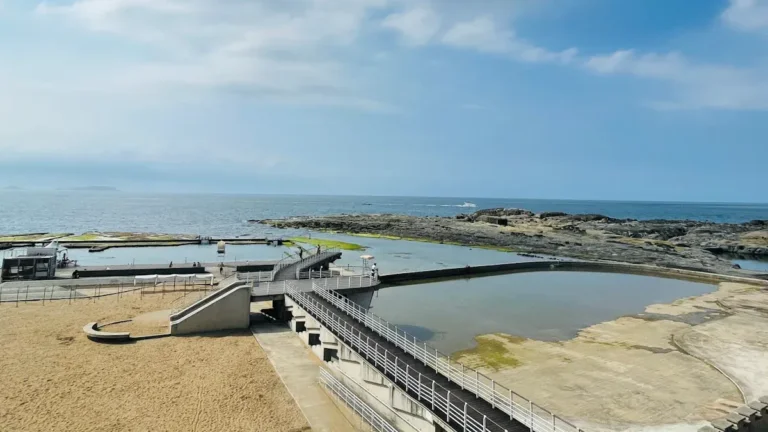Entsalzung Aktivkohle
.webp)
Aktivkohle für die Entsalzung kaufen
Aktivkohle wird vor allem als wirksames Vorbehandlungsmedium in der Meerwasserentsalzung eingesetzt. Aufgrund ihrer hochentwickelten Porenstruktur und Oberflächenchemie adsorbiert die gesättigte Aktivkohle gelöste organische Verbindungen (Algentoxine, Huminsäuren usw.), Restchlor, Schwermetallionen (Blei, Quecksilber usw.) und Geruchsvorläufer aus dem Meerwasser, schützt das nachgeschaltete Umkehrosmose-Membransystem vor Verschmutzung und Oxidation und kann durch ihre einzigartige Fähigkeit, Schadstoffe zu adsorbieren und zu katalysieren, die Lebensdauer der Membran um 30-50% verlängern. Wird die Aktivkohle mit Ozonoxidation oder biologischen Modifizierungsmethoden kombiniert, kann die gesamte Schadstoffentfernungsrate >90% betragen. Die Aktivkohle hat immer noch viele Vorteile, wie z. B. eine sehr gute Salztoleranz, geringe Betriebskosten und eine modulare Betriebsstruktur. All dies trägt dazu bei, dass sie nach wie vor die gängigste Vorbehandlungstechnologie für den nachhaltigen Betrieb von Meerwasserentsalzungsanlagen und den wirtschaftlichen Betrieb ist.
Herausforderungen für die Industrie
Wirtschaftliches Risiko
- In Meerwasserumgebungen muss die Aktivkohle in der Regel alle 3 bis 6 Monate ausgetauscht werden, was sowohl die Material- als auch die Arbeitskosten erhöht.
- Sie erfordert die Installation von Kohlefiltertanks, Rückspülvorrichtungen, Überwachungsinstrumenten usw., was die Anfangsinvestitionen erhöht.
Umwelt- und Gesundheitsrisiken
- Zur Freisetzung von VOC (flüchtige organische Verbindungen) ist eine Abgasbehandlungsanlage erforderlich.
- Die Oberfläche der Aktivkohle ist anfällig für die Ansiedlung von Bakterien (z. B. Legionellen) und muss regelmäßig desinfiziert werden. Andernfalls kann sie die nachfolgende Umkehrosmosemembran oder das Endproduktwasser verunreinigen.
- Aktivkohle hat fast keine Adsorptionskapazität für Bor im Meerwasser (mit einer üblichen Konzentration von 4-5 mg/L) und erfordert den Einsatz von Umkehrosmose-Membranen (in einer Version mit hoher Borentfernungsrate) oder Nachbehandlungsverfahren.
Technische Schwierigkeiten
- Die mikroporöse Struktur der Aktivkohle (mit Porendurchmessern von 1 bis 2 nm) ist nicht in der Lage, anorganische Salzionen wie Na⁺ und Cl- zu adsorbieren. Sie kann den Salzgehalt nicht direkt reduzieren; stattdessen muss sie auf Hauptprozesse wie Umkehrosmose oder Destillation zurückgreifen.
- Die Konzentration organischer Stoffe im Meerwasser ist hoch (z. B. Algenausscheidungen und Huminsäuren), und die Aktivkohle neigt zu einer schnellen Sättigung, so dass sie häufig ausgetauscht oder regeneriert werden muss.
- Ionen wie Ca²⁺ und Mg²⁺ konkurrieren mit organischen Stoffen um Adsorptionsplätze und verringern so die Entfernungsleistung der Aktivkohle für die Zielschadstoffe (wie Chlor, Pestizide).
- Die Schwebstoffe im Meerwasser (z. B. Sedimente und Mikroorganismen) neigen dazu, die Poren der Aktivkohle zu verstopfen, was den Druckabfall im System erhöht. Daher ist ein zusätzlicher Vorfilterungsschritt (z. B. eine Sandfiltration) erforderlich.
verwandte Arten von Aktivkohle
-r8fslg51nt6wgjtvh6yldxb1gtkgm3lpe0oq1akgog.webp)
- Jodwert: 600-1200
- Maschenweite: 1×4/4×8/8×16/8×30/12×40/20×40/20×50/30×60/40×70 (weitere Größen auf Anfrage)
- Scheinbare Dichte: 400-700
-r8fsli0q1h9h3rr567ruiwtynlb71ht629zozuhoc0.webp)
- Jodwert: 500-1300
- Maschenweite:0,9-1mm/1,5-2mm/3-4mm/6mm/8mm(Weitere Größen auf Anfrage)
- Scheinbare Dichte: 450-600
-r8fslbfupn0gui0p8mxgjghqhw7mjm31pdfamwrfjk.webp)
- Jodwert: 500-1300
- Maschenweite: 150/200/300/350 (weitere Maschenweiten auf Anfrage)
- Scheinbare Dichte: 450 - 550
-r8fsle9da54btbwls65c8xs4a1tq6pe8prdr2qn90w.webp)
- Jodwert: 400-800
- Maschenweite: 100×100×100mm/100×100×50mm (kundenspezifische Zelldichte auf Anfrage)
- Scheinbare Dichte: 350-450
- Bohrungsdurchmesser:1,5-8mm

- Jodwert: 700-1200 mg/g
- Oberfläche: 700-1200 m²/g
- Scheinbare Dichte: 320-550 kg/m³

- Jodwert: 700-1200 mg/g
- Oberfläche: 700-1200 m²/g
- Scheinbare Dichte: 320-550 kg/m³

- Jodwert: 700-1200 mg/g
- Oberfläche: 700-1200 m²/g
- Scheinbare Dichte: 300-650 kg/m³

- Jodwert: 700-1200 mg/g
- Oberfläche: 700-1200 m²/g
- Scheinbare Dichte: 320-550 kg/m³

- Aktivierungsverfahren: Dampf-/Gasaktivierung bei hohen Temperaturen
- Porenstruktur: Mikroporös-dominiert, gleichmäßige Porenverteilung
- Umweltfreundliches Profil: Chemikalienfrei, niedriger Aschegehalt
- Primäre Anwendungen: Gasphasenadsorption, Trinkwasseraufbereitung

- Aktivierungsverfahren: Chemische Aktivierung (z. B. H₃PO₄/ZnCl₂) bei moderaten Temperaturen
- Porenstruktur: Mesoporös-reich, größere Oberfläche
- Prozess-Effizienz: Kürzere Aktivierungszeit, 30-50% höhere Ausbeute
- Nachbehandlung: Saures Waschen erforderlich, um Rückstände zu entfernen

- Funktionalisierung: Beladen mit Wirkstoffen (z. B. I₂/Ag/KOH)
- Gezielte Adsorption: Verbesserte Abscheidung bestimmter Schadstoffe (z. B. Hg⁰/H₂S/saure Gase)
- Individuelle Anpassung: Chemisch optimiert für Zielkontaminanten
- Hauptanwendungen: Industrielle Gasbehandlung, CBRN-Schutz
Warum unsere Aktivkohle verwenden?

Ultrahohe Adsorptionsleistung
Jodzahl ≥ 1100 mg/g, mikroporöser Gehalt > 70%, die Adsorptionskapazität für kleinmolekulare organische Substanzen (wie Phenole, Algentoxine) im Meerwasser ist 30-50% höher als die von herkömmlichen Produkten

Salztolerante und korrosionsbeständige Konstruktion
Durch die Verwendung von Holzkohle auf Kokosnussschalenbasis und einer Graphenbeschichtung wird die Stabilität in Meerwasser mit einem Salzgehalt von ≤ 60 g/L um das Dreifache erhöht, und die Lebensdauer beträgt bis zu 6-12 Monate

Maßgeschneiderte Porenstruktur
Entwerfen Sie Gradientenporen auf der Grundlage der Qualität des einfließenden Wassers: Die oberste Schicht hat große Poren (50-100 μm), um Schwebstoffe zurückzuhalten, der mittlere Abschnitt hat Mesoporen (2-50 nm) für den Transport von Schadstoffen, und die unterste Schicht hat Mikroporen (1-2 nm), die die Schadstoffe tiefer absorbieren.

Grüne und sichere Produktion
Vorbereitung von Biomasse Rohstoffe, Kohlenstoff-Fußabdruck ist 65% niedriger als die von Kohle-basierte Holzkohle, bestanden NSF/ANSI 61 Trinkwasser Sicherheit Zertifizierung, ohne das Risiko von Schwermetall Auslaugung.
Verfahren und Technologie
1. Vorbehandlung Adsorptionsreinigung
Überblick über die Lösung
Aktivkohle als Hauptmaterial in der Vorbehandlungsstufe wird in erster Linie zur Adsorption und Entfernung von organischen Stoffen, Restchlorid, Kolloiden, Gerüchen und einigen Schwermetallen aus dem Wasser verwendet, um die Belastung des nachfolgenden Entsalzungsprozesses wie Umkehrosmose (RO) oder Destillation zu verringern und die Lebensdauer der Membran und die Qualität des Produktwassers zu verlängern.
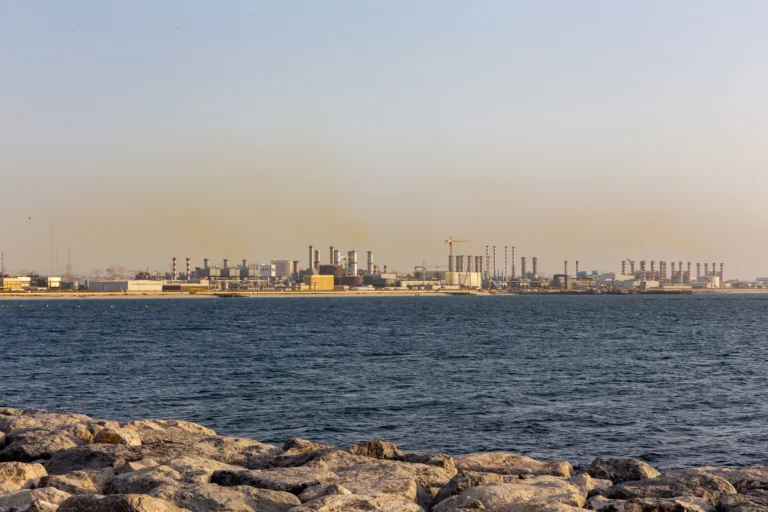
Die wichtigsten Vorteile
- Es kann gleichzeitig organische Stoffe, Restchlor, Geruchsstoffe, Kolloide und einige Schwermetalle adsorbieren und so die Belastung nachfolgender Prozesse verringern.
- Effektive Entfernung von Restchlor, um Oxidationsschäden an der Umkehrosmosemembran (RO) zu verhindern; Reduzierung der Verunreinigung durch organische Stoffe, Verringerung der Häufigkeit der Membranreinigung und Verlängerung der Lebensdauer der Membran um 20% bis 30%.
- Verbesserung der Wasserqualitätsindikatoren, Erfüllung der Anforderungen für RO-Speisewasser und Verringerung des Risikos von Biofilmwachstum auf der Membranoberfläche.
- Aktivkohle selbst ist ungiftig und setzt keine Schadstoffe frei. Außerdem wird das Restchlor nach der Adsorption in unschädliche Chloridionen umgewandelt.
-
Geeignet für Umgebungen mit hohem Salzgehalt im Meerwasser, und es ist unwahrscheinlich, dass es sich chemisch auflöst oder strukturell zusammenbricht.
2. Kombiniertes Verfahren
Überblick über die Lösung
Das kombinierte Aktivkohleverfahren verbessert die Effizienz der Schadstoffentfernung erheblich, verlängert die Lebensdauer der Kernausrüstung (z. B. der Umkehrosmose-Membranen) und verbessert die wirtschaftliche Effizienz des Systems durch Synergien aus verschiedenen Technologien.
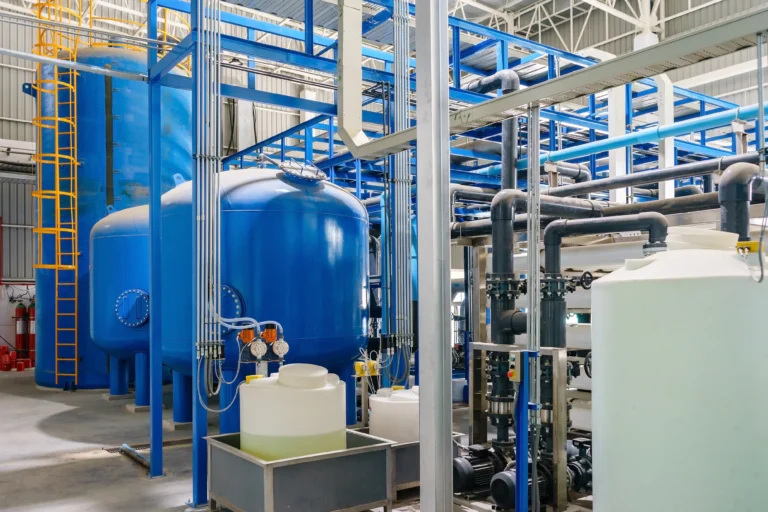
Die wichtigsten Vorteile
- Es kann gleichzeitig organische Substanzen, Restchlor, Schwermetalle, geruchsverursachende Substanzen und Kolloide adsorbieren und deckt damit über 90% der üblichen Vorbehandlungsschadstoffe ab.
- Sie ist auch bei niedrigen Schadstoffkonzentrationen wirksam. In Kombination mit Aktivkohle kann die Photokatalyse-Aktivkohle-Methode eine Abbaugeschwindigkeit von 99% erreichen.
- Nach der Optimierung der Vorbehandlung wird der Betriebsdruck der Umkehrosmoseanlage um 10% auf 15% reduziert, was zu Energieeinsparungen führt.
- Biologische Aktivkohle (BAC) nutzt Mikroorganismen zum Abbau organischer Stoffe und reduziert die Dosierung chemischer Mittel um mehr als 30%.
- Ozon spaltet große Moleküle auf, während Aktivkohle kleine Moleküle adsorbiert, wodurch das Problem der unzureichenden Einzeladsorptionskapazität gelöst wird.
3. Schutz des Membransystems
Überblick über die Lösung
Die Aktivkohle bewirkt den Abbau von Restchlor (Cl₂/HClO) durch funktionelle Gruppen an der Oberfläche (d.h. Carboxylgruppen) in harmlose Chloridionen (Cl-) mit einer Reaktionsgeschwindigkeit von mehr als 95%, anstatt die Polyamidschicht der Umkehrosmose-Membran oxidativ zu schädigen.
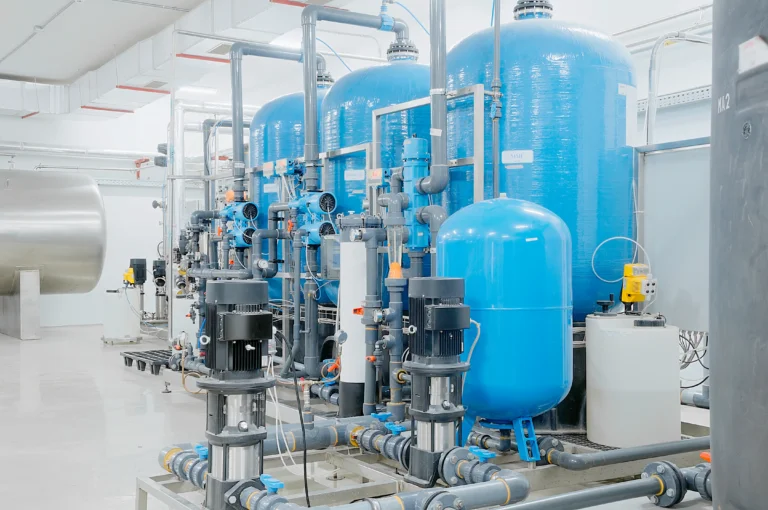
Die wichtigsten Vorteile
- Schnelle Zersetzung von Restchlor, wirksame Entfernung organischer Substanzen, Rückhaltung kolloidaler Partikel und Adsorption einiger Schwermetallionen
- die Anhaftung von Mikroorganismen und ihren Stoffwechselprodukten an der Membranoberfläche erheblich reduzieren
- Es bildet ein mehrstufiges Schutzsystem in Verbindung mit Verfahren wie der Multi-Media-Filtration und der Ultrafiltration und wird zur Verstärkung der Wirkung mit Ozon und biologischer Behandlung kombiniert.
- Es verursacht keine Sekundärverschmutzung und führt keine Schadstoffe ein. Es eignet sich für die Vorbehandlung von Meerwasser mit unterschiedlichen Salzgehalten und Trübungen.
- Verlängern Sie die Lebensdauer von RO-Membranen, reduzieren Sie die Häufigkeit der Reinigung und senken Sie den Energieverbrauch des Systems.
4. Gezielte Beseitigung von besonderen Schadstoffen
Überblick über die Lösung
Das Membransystem wurde so weiterentwickelt, dass es eine 10-fach höhere Toleranz gegenüber speziellen Schadstoffen wie Algentoxinen und Arzneimittelrückständen aufweist, was eine wichtige technische Unterstützung für die Gewährleistung der Sicherheit des Trinkwassers darstellt.
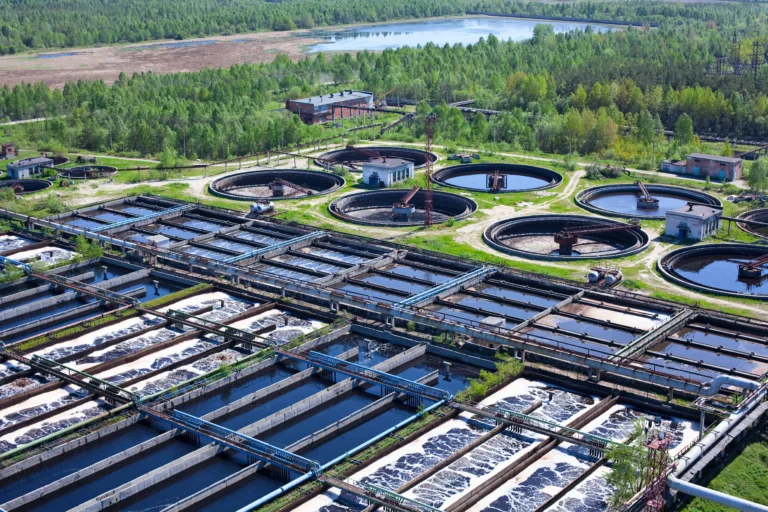
Die wichtigsten Vorteile
- Durch die Steuerung der Porengröße (z. B. 1,2 nm für Antibiotika) und durch Oberflächenmodifizierung (-SH für Hg²⁺) liegt die Entfernungsrate von neuen Schadstoffen wie PPCPs und PFAS bei über 90-99%.
- Bei einer Salzkonzentration von 35 g/l erreichte die Adsorptionskapazität von Bisphenol A durch den hydrophob modifizierten Kohlenstoff immer noch 120 mg/g.
- Effiziente Adsorption von Cd²⁺ unter sauren Bedingungen und Entfernung von As³⁺ in alkalischer Umgebung
- Während des Ausbruchs von Algentoxinen (mit einer Konzentration von mehr als 10 μg/L) wurde eine 95%-Entfernungsrate aufrechterhalten.

